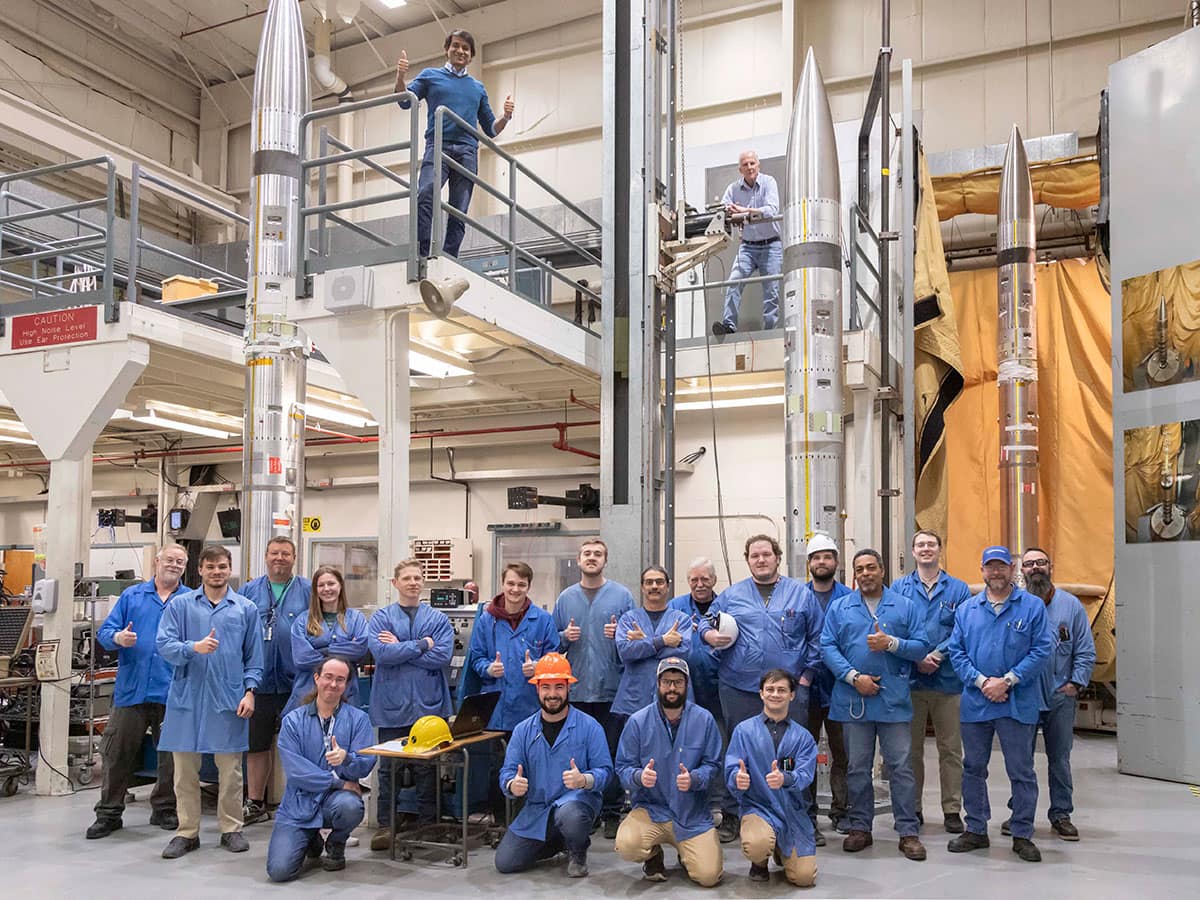Embry-Riddle Researchers to Launch Rockets Into Solar Eclipse as Part of NASA Mission

On Earth, an otherworldly twilight at midday, a sudden temperature drop, dead-calm winds and a chorus of birdsong can be expected when the moon blocks the sun during a total solar eclipse on April 8, 2024.
Understanding how this rare cosmic event impacts Earth’s upper atmosphere is the focus of research directed by Dr. Aroh Barjatya of Embry-Riddle Aeronautical University.
By blasting a trio of rockets into the solar eclipse, Barjatya’s team hopes to gain insights that might someday help researchers model and predict communication disruptions caused by space-based changes, or perturbations, in the atmosphere.
Three NASA rockets equipped with Embry-Riddle student-built scientific instruments are expected to soar up to 420 kilometers (km), or nearly 260 miles, above NASA’s Wallops Flight Facility at Wallops Island, Virginia, said Barjatya, who designed the multi-institution NASA rocket mission called APEP (Atmospheric Perturbations around Eclipse Path).
As the moon’s shadow races through the atmosphere, “the rapid, highly localized sunset and sunrise create large-scale waves and small-scale perturbations that can interfere with radio communication,” explained Barjatya, a professor of Engineering Physics and director of the Space and Atmospheric Instrumentation Lab (SAIL) at Embry-Riddle.
The main goal of the mission, Barjatya said, is to study and characterize eclipse-related perturbations in the ionosphere — an upper layer of our atmosphere that predominantly extends from about 90 km to 500 km, or roughly 55 to 310 miles, where the pressure is low enough that charged particles exist freely in the fourth state of matter called plasma.
“All satellite communications and GPS-type navigation signals pass through the ionosphere and are affected in different ways depending on the conditions of the plasma there,” said Nathan Graves, one of nine students who have been working on the project with Barjatya. “Thus, being able to understand ionospheric perturbations, model them and predict when they can happen is critically important in a connected society.”
Atmospheric perturbations can happen each day as the sun sets, altering the temperature, density and chemical composition of the ionosphere. As solar radiation fades at sunset and returns at sunrise, the ionosphere’s plasma density and total electron content also go down and up in synchrony. An eclipse makes all these changes happen more quickly and at a smaller regional scale, and like a motorboat speeding across a pond, it can churn up atmospheric waves, Barjatya has explained.
Preparing for the Mission
On April 8, the three rockets will be launched 45 minutes before the peak eclipse over Wallops Island, when the eclipse reaches its peak in that location, and 45 minutes later. Each rocket will measure the density of charged as well as neutral particles, along with electric and magnetic fields, at all altitudes of the rockets’ trajectory.
Each rocket will also eject four instrument-equipped sub-payloads, each about the size of a two-liter bottle of soda, to obtain the same information. In this way, Barjatya said he expects to capture a total of 15 data profiles, “which is almost akin to launching 15 rockets while launching only three.” Three of the sub-payloads per rocket were built by Embry-Riddle, and the fourth was built by collaborators at Dartmouth College.
To supplement the very small-scale measurements captured by the rockets, Barjatya said, mission collaborators from the U.S. Air Force Research Lab and MIT’s Haystack Observatory will gather larger-scale measurements from the ground using various radar technologies. In addition, the Embry-Riddle team plans to launch high-altitude science balloons to observe meteorological changes triggered by the eclipse.
The April 8 mission builds upon a similar Embry-Riddle effort that took place from New Mexico’s White Sands Missile Range during the partial or “annular” solar eclipse of Oct. 14, 2023.
From the earlier mission, Barjatya reported, “We saw a sharp reduction in charged particle density as the shadow went by. We also saw the onset and development of perturbations in the second and third rockets — that is, the one launched at peak local eclipse and the one launched afterward. By comparing those results to what we gather from the total eclipse, we would like to study if the perturbations start at the same altitude and if their magnitude and scale remain the same.”
Traditionally, satellites are used to study ionospheric perturbations, Barjatya added, and they can provide years of data, but they might not be in the right place at the right time to study an event such as an eclipse. Satellites also don’t typically travel below 300 km, he said. Thus, he added, “sounding rockets are the perfect vehicles to do targeted scientific studies, especially for the lowest altitudes of the ionosphere.”
The Embry‑Riddle team includes Professor of Engineering Physics Dr. Matthew Zettergren; research scientists Dr. Robert Clayton and Dr. Shantanab Debchoudhury; Ph.D. students Rachel Conway, Henry Valentine and Nathan Graves; master’s degree students Peter Ribbens, Joshua Milford and Jonas Rowan; and undergraduate students Megan Soll, Johnathan Bizzano and Maddox Morrison.
To view a solar eclipse safely, always use solar-filtering glasses. The American Astronomical Society provides a list of manufacturers offering glasses that meet safety standards. Many of the glasses can be ordered easily via Amazon or other websites.

 Ginger Pinholster
Ginger Pinholster